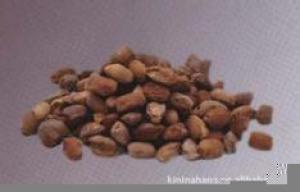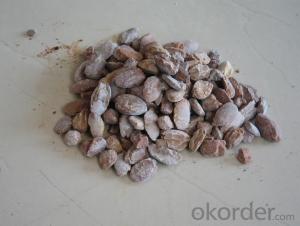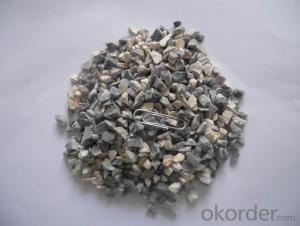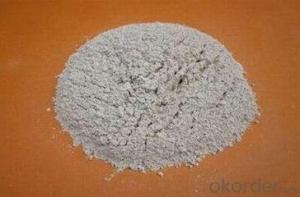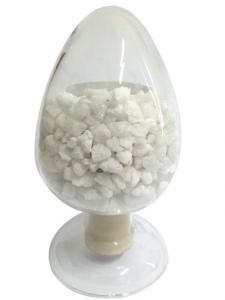Raw Materials for Refractory - Dead Burnt Magnesite MgO 93%
- Loading Port:
- Dalian
- Payment Terms:
- TT OR LC
- Min Order Qty:
- -
- Supply Capability:
- 2000 m.t./month
OKorder Service Pledge
OKorder Financial Service
You Might Also Like
| Item | MgO | SiO2 | CaO | LOI | B.D.(g/cm3) |
| DBM-97 | 97 | 0.7 | 1.4 | 0.2 | 3.2 |
| DBM-96 | 96 | 1.5 | 1.5 | 0.2 | 3.2 |
| DBM-95 | 95 | 2.2 | 1.6 | 0.3 | 3.2 |
| DBM-94 | 94 | 3 | 1.6 | 0.3 | 3.2 |
| DBM-93 | 93 | 3.5 | 1.6 | 0.3 | 3.2 |
| DBM-92 | 92 | 4 | 1.6 | 0.3 | 3.18 |
| DBM-92 | 92 | 4 | 1.6 | 0.3 | 3.18 |
| DBM-91 | 91 | 4.5 | 1.6 | 0.3 | 3.18 |
| DBM-90 | 90 | 4.8 | 2 | 0.3 | 3.18 |
| DBM-87 | 87 | 7 | 2.2 | 0.3 | 3.2 |
Dead burned magnesite- DBM-is produced using selected natural magnesite that is purified and is calcined in a shaft kiln.The final product is used for electric furnacefloors and furnace liner tamping.
Main products level :
0-1mm;1-3mm;3-5mm;0-10mm;0-30mm
50 to 325mesh (90% through)
Product feature:
high temperature performance and high-density, strong anti-permeability ability and easy to rapid sintering, very thin sintered layer,good thermal shock stability, strong slag-resistance, long service life and so on.
Product function:
Apply to the construction of bottom and wall of all kinds steel making electric arc furnace and ferroalloy smelting furnace for hot charging of hot metal and second hand steel
Product usage:
Mainly used in producing common magnesite brick, magnesite aluminum brick, magnesite chrome brick, gunning mix, hot patching mix for converter and EAF ect .
Product Advantage:
Our factory produce the products of the Dead-burned magnesite are selected natural magnesite, it is produced by mine-selecting, purifying, calcimine in shaft kiln. It is an ideal material for unshaped refractory material, the final products are used in open hearth furnace, electric furnace bottom and furnace's lining tamping.
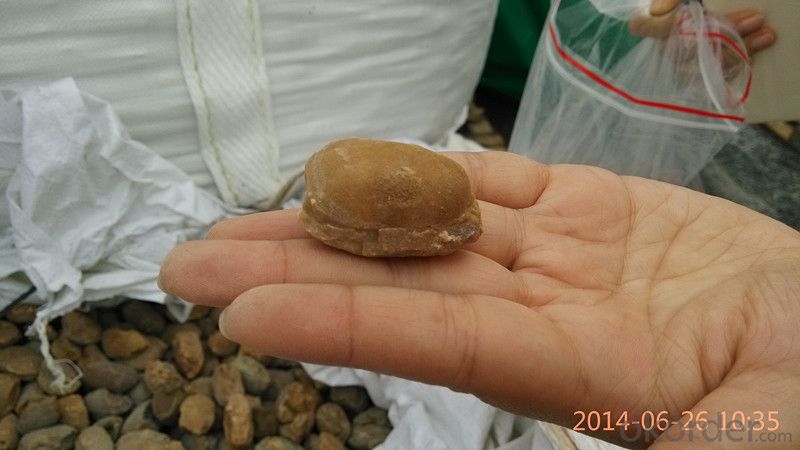
- Q: A chemical problem with refractory materials
- In chemistry, there is never absolute
- Q: How long can gypsum board endure fire?
- Fire endurance refers to the fire-resistent limit of the whole system of light-gauge steel structure coupled with gypsum. It does nor merely refers to gypsum board. Fire endurance of the common gypsum board with the thickness of 9.5mm keeps 1.5 hours. Those gypsum board with the thickness of 12mm has a fire endurance of 3 hours.
- Q: What's the fire?retardant material of roller shutter fire resistance door ?
- They are composited by inorganic materials, and the main components are perlite, inorganic adhesive and other special formula. It has flat and smoothe surface, unibody and stronger strength after molding. It has owned Chinese and Taiwan strength patent. It is fireproof, sound and thermal insulating. It has passed tests of Tianjin Fire Research Institute and Beijing construction institute. It is an ideal product.
- Q: Are the specification of fireclay bricks and ordinary clay brick the same?
- Do you want to know whether the specifications of fireclay bricks and ordinary clay brick are the same?
- Q: what is the requirements of roofing insulation materials fire rating?
- The fireproofing requirements of architectural design are regulated by architectural design fire?safety?rules, roofing insulation material only has the requirements of materials combustion performance, namely non-combustible material. No fire rating requirements.
- Q: Who knows how to divide the building fire grade and fire resistance grade?
- I hope to help you building fireproof rank division is one of the most basic measure in building fire safety technical measures, Building's fireproof rank is divided into class one, two, three, four according to China's architectural design specification. Fire-resistant capability of the highest level is the strongest; Fire resistance of four level of the weakest. The fire resistance level of a building depends on the combustion performance and fire resistance of the building components that comprise the building. The so-called building component refers to a series of basic components, such as wall, foundation, beam, column, floor, stair, ceiling and so on.
- Q: What is the material of fire resistant glass reinforced plastics grating?
- What is the material of fire resistant glass reinforced plastics grating?
- Q: What's the type of fire proofing thermal insulation materials?
- Hello! Fire proofing thermal insulation material can be classified as inorganic thermal insulation material and composite thermal insulation material. According to the form, it can be divided into fibrous veneer, mineral wool, rock wool, glass wool, aluminum silicate cotton, ceramic fiber, microporous diatomite, calcium silicate, expanded perlite, expanded vermiculite, aerated concrete, bubble foam glass, ash, glass, clay, foam concrete, and pasted paste powder polystyrene particles insulation pulp, etc. They are characterized by flame retardancy and fire proofing and thus can be used in buildings with high fire proofing class. Among them, calcium silicate, aluminum silicate and asbestos can also be used for the thermal insulation for heat supply pipelines.
Send your message to us
Raw Materials for Refractory - Dead Burnt Magnesite MgO 93%
- Loading Port:
- Dalian
- Payment Terms:
- TT OR LC
- Min Order Qty:
- -
- Supply Capability:
- 2000 m.t./month
OKorder Service Pledge
OKorder Financial Service
Similar products
Hot products
Hot Searches
Related keywords
